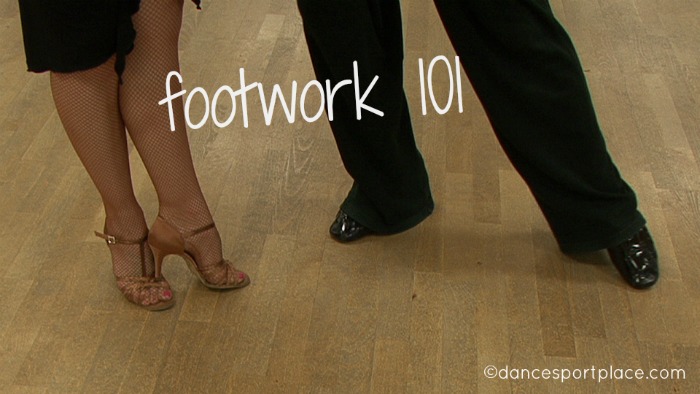Whether you’re a boxer, an ice skater, a soccer player or James Brown , “good footwork” is critical. It’s the same for us ballroom dancers, as one of the most common terms we hear in technique is Footwork.
Judges scrutinize the footwork, coaches correct the footwork and dancers…well, depending on your personality, you either obsess over it, or hope nobody will notice yours!
Footwork in ballroom isn’t about where your feet go (the patterns ),
but the part of the foot you use for a movement or step.
By using the proper part of the foot for a respective step, correct technique and balance will come about naturally. And starting with a solid base of proper footwork, ensures building on top of it will make dancing more stable and secure.
If you’re a Latin or American Rhythm dancer and have are working to perfect your hip action, it’s a good idea to take a look at your footwork, first. It all starts from the floor up! Correct your footwork, and you’ll see a great improvement in your hip action.
That’s why American Rhythm and Latin dance footwork is so important!

Ball of the Foot:
In Latin and Rhythm dancing, many steps are taken using “ball, flat” footwork. Unlike Standard and Smooth dances, using heel leads is relatively rare, and when they do appear, are mainly in the dances that travel around the floor-Paso Doble and Samba.
By using the ball of the foot properly as a step is taken, it aligns the rest of the body (ankles, knees, hips) to ultimately produce proper hip action. Some footwork calls for use squarely of the ball of the foot (ex: sur place in Paso). But more often, the use of the inside edge of the ball of the foot is common.
Practice the feeling in these two exercises:
1. Stand with feet apart and shift your weight to one leg. With the free leg (while keeping your foot in contact with the floor), roll your foot and ankle inward till only the inside edge of the ball is in contact with the floor. If you bend the knee of this same leg, you should feel a strong pressure on the inside edge of your foot against the floor. Now shift your weight to the other to practice with the other side.
2. Stand with your feet together and parallel. Shifting your weight slightly towards your heels, move your big toes apart while keeping your heels in contact. Your feet should make a “V” shape. Transfer your weight more strongly to one leg. Bend the knee of the free leg and relax your ankle; your heel with lift from the floor. The bend knee should “drape” across the straight leg. Your free foot will now have rolled in (but keep toes turned out) and the contact point of your foot on the floor will be with the inside edge of your foot. Practice on the other side as well.
Check your shoes:
Want to know if you’re using your feet properly? Do a little forensic work by checking out the wear pattern on your shoes. It’s a good insight into how you’re using your feet.
Take a look at your Latin dance shoes and note if the inside edge of the ball is more worn down. On the other hand, if the outer edges appear more worn, or if there is no sign of greater use on the inside, chances are you need to reevaluate how you are using your feet.
Latin dance shoes themselves provide some assistance in putting your weight in the proper place to facilitate the use of the inside edge of the ball.
Even for the men, having that Cuban heel naturally shifts your weight towards the ball of the foot. That is why it is critical to use the proper footwear for each dance style. (Read this article for more information about shoes)
Once you’ve got the right “tool” for the job, it’s time to sharpen your skills with practicing the footwork conscientiously.
Building strength:
It takes time to build up enough strength in the ball of the foot to receive the power and speed that you’ll need to execute steps.
Take time prior to your practice or lesson to properly warm up your feet (use the above exercises and then continue with some basic patterns in the dance you’re working on), so you build both dexterity and awareness.
By building upon a solid foundation of good footwork, you’ll find improved balance and that other areas of technique fall into place more easily.
P.S. If you’re ready for the advanced level James Brown footwork, better learn from the master himself:
- Write your Dance: Improve your dancing through journaling - November 12, 2019
- The Difference Between Oversway and Throwaway: Ballroom Video Preview - June 8, 2018
- Principles of Movement: Ballroom Basics Video - September 21, 2016

we respect your privacy and will never share your information! Unsubscribe at any time.



